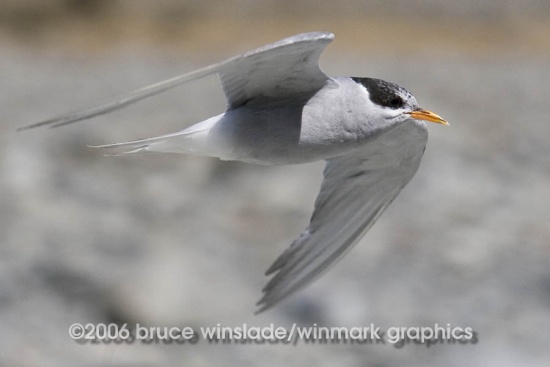
Photo by winmark
Hooker River, Canterbury, South Island of New Zealand, February 2006
- Chlidonias albostriatus
Identification
29cm
- Blue grey body
- White rump
- Short shallow–forked tail
- Black cap
- Bright orange bill and legs
Juveniles lack the black cap.
Distribution
South Island; disperses to Stewart Island and North Island (New Zealand)
Status
Classified as Endangered in the 2007 IUCN Red List).[2]
Taxonomy
This is a monotypic species[1].
Habitat
Breeds in small colonies on gravel riverbeds of South Island, disperses to coasts.
Behaviour
Breeding
Colonial breeders (up to 50 pairs), mostly inland but some may be found near the coast. The nest is a shallow scrape, with a few short bits of twigs around it. The clutch consists of 1-2 eggs.
Diet
The diet includes nymphs, mayflies, stoneflies, fish, insects, worms and grass grub larvae.
References
- Clements, JF. 2009. The Clements Checklist of Birds of the World. 6th ed., with updates to December 2009. Ithaca: Cornell Univ. Press. ISBN 978-0801445019.
- BirdLife International
- New Zealand Birds
Recommended Citation
- BirdForum Opus contributors. (2025) Black-fronted Tern. In: BirdForum, the forum for wild birds and birding. Retrieved 9 May 2025 from https://www.birdforum.net/opus/Black-fronted_Tern
External Links
Search the Gallery using the scientific name:
Search the Gallery Using the common name:
GSearch checked for 2020 platform.



